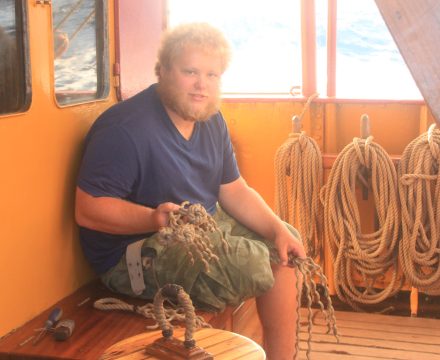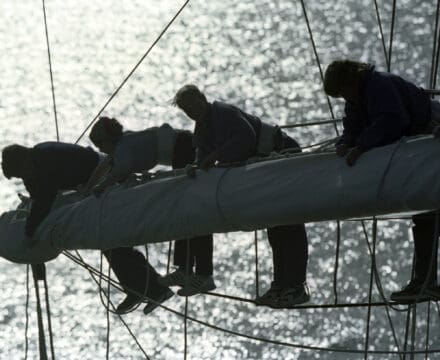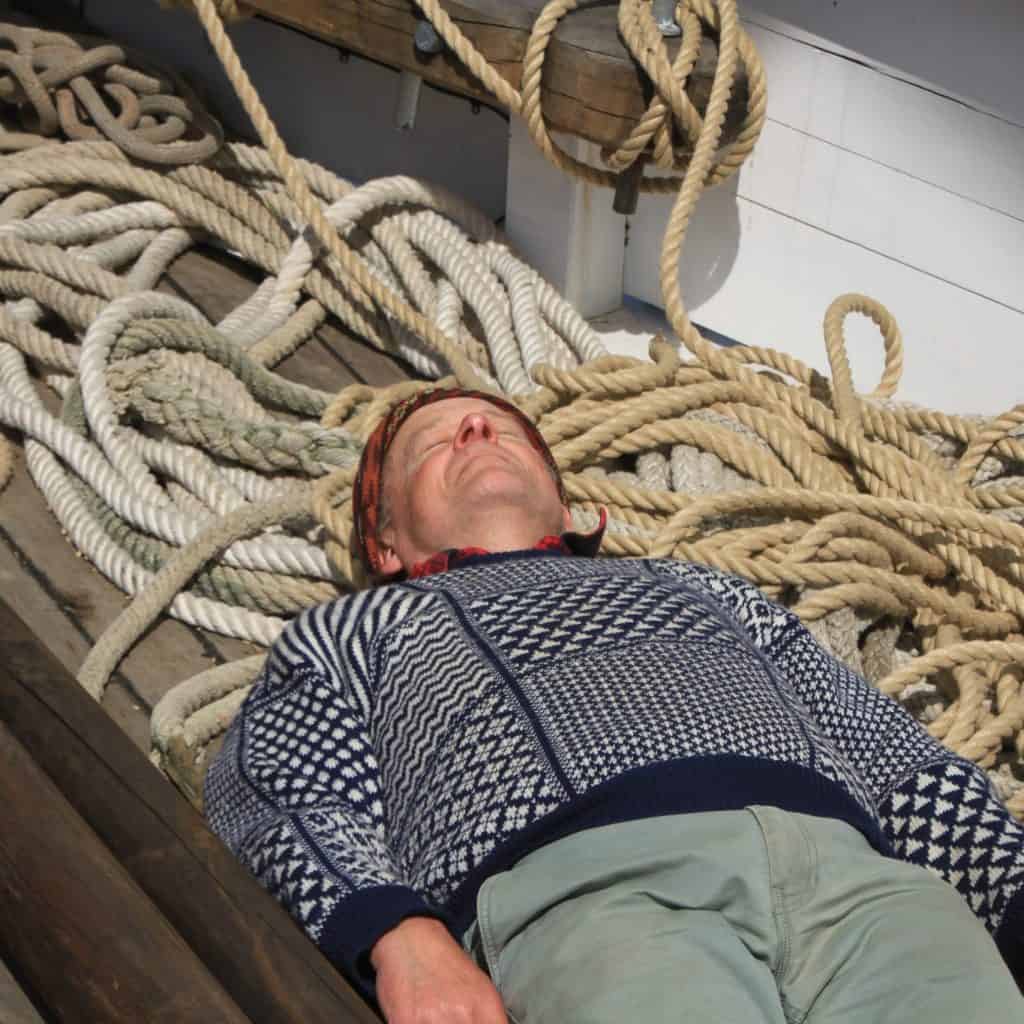How to Become a Bosun: Skills, Training & Life at Sea
I count myself lucky to have been a tall ship bosun, though I’ll admit it wasn’t a full-time affair. Back along at the turn of the century, I served as a ‘relief bosun,’ mostly on voyages around the Canaries during the winter months. Truth be told, it felt more like a paid holiday in the sun than hard work. I probably embodied the stereotype of a typical relief bosun—taking care of the essential safety maintenance, but the rest of the time was spent supervising from the deck, occasionally finding my way up into the rigging, probably posing more than working! It was a fine balance between keeping things safe and enjoying life in the sun.
Of course, Weymouth in midwinter was a stark contrast. There, the ship wasn’t at sea, and much of the rigging was strewn across the quayside. We were busy overhauling bottle screws and engaging in all the necessary—but distinctly unglamorous—greasy work. You’d find sleet whipping past your ears, and the cold certainly took the shine off the romantic notion of life aboard a tall ship. But it still wasn’t as tough as in Sunderland Dock, where the sleet wasn’t just cold but black with coal dust. Thankfully, I had sailed the ship there and was leaving straight away, letting someone else take over the bosun role. Poor sod!
But back to the bosun’s role—whether it’s a ‘relief’ position like mine or full-time, the responsibilities are essential to the ship’s wellbeing. A bosun (or boatswain) is central to the smooth running and safety of a tall ship, maintaining the integrity of all rigging, sails, and everything on and above deck. The engineer was responsible for everything below decks.
What Does a Bosun Do?
A bosun’s role is vital on any sailing vessel, from traditional tall ships to smaller gaff-rigged boats. The job blends technical skill, seamanship, and leadership—keeping everything in working order while ensuring the deck crew know their roles and carry them out efficiently.
Essential Skills for a Bosun
Rigging Maintenance and Safety
A bosun ensures the maintenance of all standing rigging—those vital wires or ropes that hold the masts and bowsprit in place. Then there’s the running rigging, which includes the ropes, sheets, and halyards that control the sails. Each piece needs to be in perfect working condition, which also means being able to work rope with splices, whipping, performing sail repairs, and tackling leatherwork and patching as needed.
At the end of a refit period comes a time when you bend on the sails again—that is, put the sails back in position. You then begin to see the ship take proper shape and know you will soon be sailing out on the ogin.
It’s not all ropes and sails, though. A bosun must also look after the anchors and the machinery that raises and lowers them—capstan or windlass. And, let’s not forget the on-deck safety equipment—life rafts, harnesses, throw lines, and fire-fighting gear must always be in good condition, within their use-by date, and ready for immediate deployment.
Sail Handling and Deck Operations
A bosun carefully supervises major sail-handling operations. In normal conditions, the crew should be able to manage it on their own. Whether supervising tricky manoeuvres, ensuring proper shoreline management in port, or executing anchoring operations, the bosun’s experience is key. A good bosun will have predicted the next order from the captain and have a clear plan in their head on how to execute the required task, with hands on standby to undertake the work.
Training and Leadership
People come sailing on a tall ship to be part of the crew. They want to get stuck into sail handling and keeping the ship on course with well-set sails. The bosun is the head of the team that makes it possible for complete beginners to make a useful contribution to the sailing of the ship. There is no way they can train everyone themselves, so the ship will use either bosun’s mates or watch leaders to train the people on board. The bosun plays a supervisory role and can step in if more assistance is required.
Training involves pulling on ropes, securing and coiling them, setting and trimming sails, and handing sails away. Safe training in going aloft using safety harnesses and where to clip them on the standing rigging is essential. The temptation to skylark has to be resisted, as bosuns have to set a good example. (No, I’ve never been known to slide down a backstay as Jack Aubrey does in Master and Commander: The Far Side of the World. Well, maybe once or twice—before I was a bosun.)
Ongoing and Preventative Maintenance
Part of the job involves keeping a close eye on the ship’s maintenance schedule, ensuring that the vessel remains operationally ready at all times. Ongoing inspections and minor repairs between major refits are crucial for both the ship’s appearance and function. A well-kept ship not only looks the part but also sails smoother and safer.






How to Become a Bosun
There’s no single path to becoming a bosun, but it usually involves hands-on experience and a solid understanding of traditional seamanship. Here’s a rough progression:
Start as Deck Crew – Most bosuns begin as deckhands, learning the fundamentals of rigging, knots, splicing, sail handling, and vessel maintenance. Experience on a variety of boats helps build the skills needed.
Gain Practical Skills – A good bosun needs to be competent in ropework (whipping, splicing, seizing), sail repairs, carpentry, painting, and varnishing. If working on a tall ship, understanding how to go aloft safely is essential.
Take Relevant Courses – While most bosuns learn on the job, formal qualifications can help. Courses such as the RYA Day Skipper and Yachtmaster, STCW safety training, and rigging or sail-making apprenticeships can boost your credentials.
Step Up as Bosun’s Mate– On larger vessels, there’s often a bosun’s mate role where a deckhand can take on extra responsibilities under the supervision of the bosun.
Become a Bosun – Once confident in managing deck operations and training new crew, a deckhand can step up into the bosun role. Experience, attitude, and competence matter more than formal qualifications, but a bosun must be prepared to take charge and problem-solve under pressure.
For anyone who enjoys practical, hands-on work and wants to take on more responsibility at sea without stepping into full-time navigation or engineering, becoming a bosun is one of the most rewarding routes in traditional sailing. It’s a role that demands knowledge, skill, and leadership—but for the right person, it offers a life spent working at the heart of a living, breathing sailing ship.
Good sailing,
Adam
.
Rope Work and traditional skill Courses.






